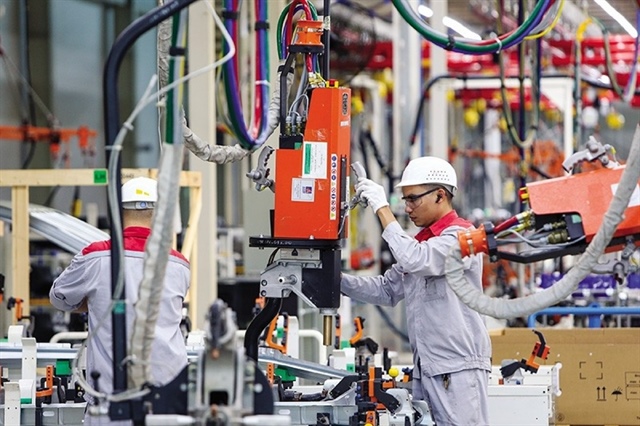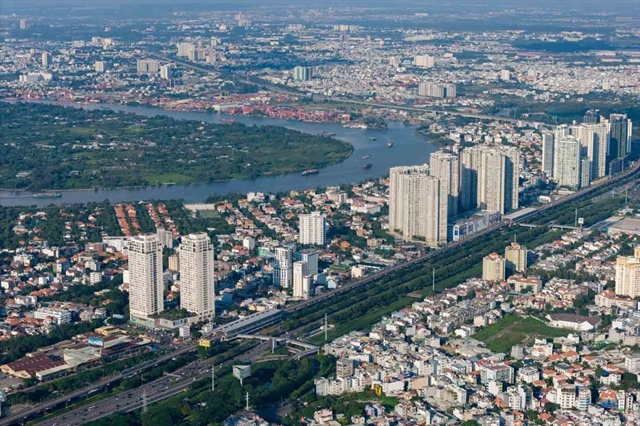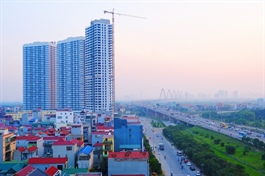Vietnamese businesses seek way out as Russia-Ukraine military confrontation escalates
Vietnamese businesses seek way out as Russia-Ukraine military confrontation escalates
Many Vietnamese enterprises are trying to adapt to difficult circumstances caused by the military conflict between Russia and Ukraine, as well as to seize more trade opportunities opened up during this period.

As a result of those efforts, Vietnam has strongly increased the exportation of rice and other agricultural and food products to Europe, which is importing about US$160 billion worth of food every year, according to experts.
Vietnamese rice price is standing at $415-420 per metric ton on the world market, about $12-15 higher than the beginning of the year and some $10 pricier than early March, according to statistics of the Vietnam Food Association (VFA).
By comparison, Thailand’s rice of the same quality is sold at $408-410 per metric ton.
In the first quarter of 2022, Vietnam’s coffee exports approached $1.22 billion, up 50.4 percent over the same period last year.
The country’s exports of vegetables and fruits reached nearly $322 million, up 47.9 percent compared to February, according to the Vietnam Fruit and Vegetable Association (VinaFruit).
On a global scale, the Food and Agriculture Organization (FAO) Food Price Index, which tracks the most globally traded food commodities, averaged out at 159.3 points in March, up 12.6 percent from February when it hit a record high since its inception in 1990, the U.N. food agency said on Friday last week.
The agency attributed the price hike to the crisis in Ukraine, which sent prices of staple grains and edible oils soaring.
Finding new buyers
Phuc Sinh Group, a leading agricultural product exporter in Vietnam, successfully liquidated its goods whose delivery process had been disturbed by the war in Ukraine.
When its partners failed to pay for a number of coffee and pepper shipments, which were on the way to Russia at the time when the Russian military began attacking Ukraine, the company produced an ad-hoc solution -- halting the delivery process and selling the commodities to other buyers at the ports in transit countries such as Singapore, the Netherlands, Germany, and Switzerland.
Phuc Sinh’s annual exports to Russia and Ukraine are estimated at $30 million, accounting for 10 percent of its revenue, according to general director Phan Minh Thong.
Thong said that the company is boosting exports to France, Germany, and Switzerland in the near future to make up for losses caused by the Russian market as Vietnam’s exports to Russia have been obstructed by long transport time and troublesome payment processes.
More trade opportunities
Demands from the U.S. and Europe, which make up more than 80 percent of Vietnam’s woodworking export revenue, currently stay high, according to Bui Huu Them, deputy general secretary of the Handicraft and Wood Industry Association of Ho Chi Minh City (HAWA).
Therefore, if these two markets reduce or even stop importing Russian furniture, Vietnam will have a chance to reach new clients and expand its export value.
Besides, Nguyen Quoc Toan, director of the Agricultural Products Processing and Market Development Department, underscored that Vietnamese businesses should take advantage of the EU-Vietnam Free Trade Agreement (EVFTA) and the UK-Vietnam Agreement (UKVFTA) to promote their brands in Europe and the kingdom during this period.
Meanwhile, Dang Phuc Nguyen, general secretary of the VinaFruit, said that Vietnamese enterprises should focus on the country’s staple products, such as mangoes, durians, lychees, passion fruits, leafy vegetables, and spices.
However, Nguyen emphasized that Vietnamese firms must improve product quality to meet the requirements of importers.
“The most fastidious markets like Europe and the U.S. require GlobalGAP [a trademark and set of standards for Good Agricultural Practices], while the number of Vietnamese fruit and vegetable products meeting the standards is quite modest,” Nguyen said.
Do Ha Nam, deputy chairman of the VFA, added that high transportation cost is another problem that Vietnam has to deal with.
The freight rate from Vietnam to Europe is currently at $13,000-16,000 per shipping container, whereas that to the U.S. is about $20,000 per container, seven to nine times higher than before.
This is definitely a drawback, especially in comparison with China -- a country with well-developed systems of sea, air, and transcontinental rail transport, according to Nam.






















